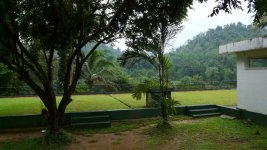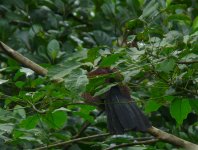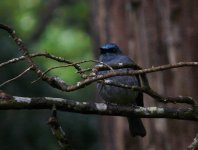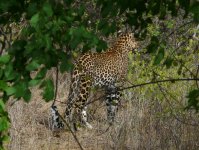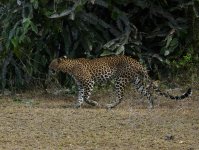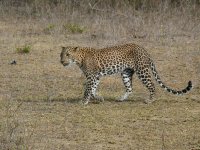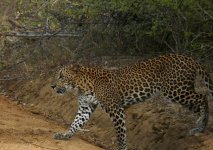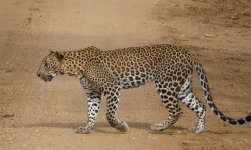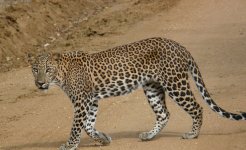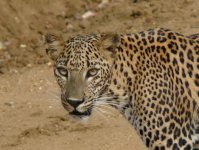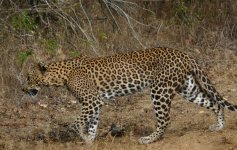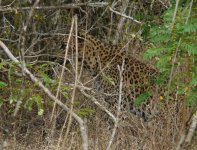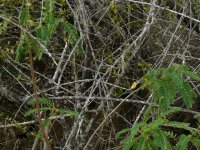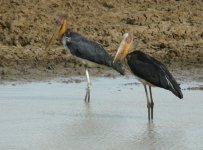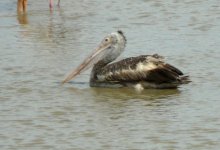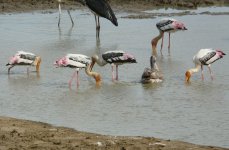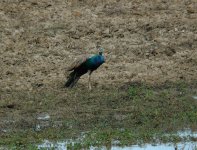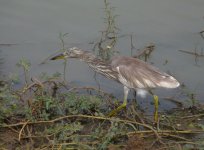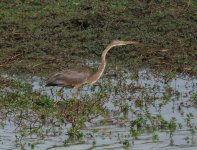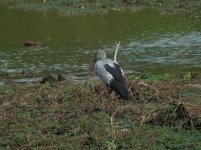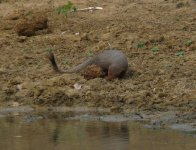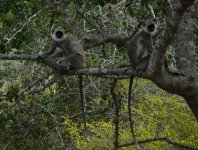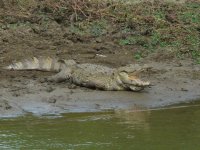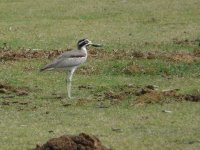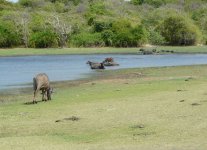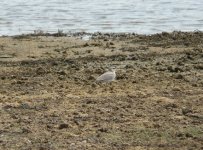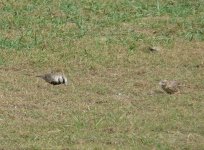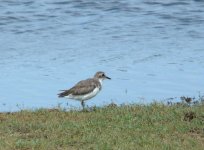
So I thought it was about time I got around to doing a trip report for my holiday in Sri Lanka last summer. I wonder if I'll finish it. Let's see how we go. First up, a bit of background.
Organisation
Sri Lanka is a pretty easy country to do independently. It's even easier to do if you're lazy and get other people to organise it for you. I took the lazy, though much more expensive option and sorted out my trip with Jetwing Eco Holidays. This mostly worked well although sometimes emails don't seem to get to them. If you organise things with them and don't get a reply to an email fairly soon then you'll probably need to re-send it. It also wasn't really expensive, given that it was just me on my own with a guide. But you could no doubt do it much cheaper on your own. I was quite happy with Jetwing, although some of the places I stayed could have been better (particularly the fancier places - see below).
Itinerary
Basically, the first eight days were spent with a guide travelling to various areas of the country and then the remaining two and a half weeks were spent on my own at Sinharaja Forest. This is much longer than most people spend there, but I thought it was well worth it.
So the itinerary was as follows:
13th July: Flew from Aberdeen via London Heathrow to Colombo with Sri Lankan Airlines. Although Sri Lankan fly direct from the UK, I must admit I wasn't too impressed with them and would probably fly with another carrier if I was returning. They seem very reluctant to allow you to sleep, for some reason.
14th July: Arrived in Colombo early morning, met up with my guide Upali and then drove to Kithulgala. Stayed at Kithulgala Rest House for three nights. This was quite a nice place, with impressive views across the river.
17th July: Left Kithulgala and drove to Nuwara Eliya, where I stayed at the Tea Bush Hotel for two nights. Quite a friendly hotel.
19th July: Left Nuwara Eliya and drove the fairly spectacular route to Yala. Stayed for two nights at the Elephant Reach Hotel. This is quite a fancy 'safari' type place but it was a bit poor in a lot of respects. Service in particular was quite bad.
21st July: Left Yala and called in at Udawalawe National Park before spending one night at Centauria Hotel in Embilipitiya. This was another rather elaborate hotel that was a bit disappointing, with unfriendly staff, poor food and no mosquito nets in the rooms, despite being in the most mosquito ridden place I went to in Sri Lanka.
22nd July: Travelled to Sinharaja to stay at the legendary Martin's Simple Lodge for the rest of the trip. Martin's is rustic but great. I'll say more about it later.
7th August: Left Martin's and was driven to Colombo airport for a flight back to the UK.
Guides
My guide for the first eight days was Upali Nissanka. He's a good chap and was quite patient with my ever changing demands and my inability to set my clock to the right time (I was half an hour ahead for the first four days!). I wouldn't necessarily say he was the sharpest-eyed guide I've ever met but he had a good knowledge of sites and an ability to drive on Sri Lankan roads.
At Sinharaja you're somewhat obliged to use a local guide when going into the forest reserve. The guides are a bit hit and miss but Upali sorted me out with a young chap called Danuschka. He was quite excellent and extremely good company for the rest of my stay. If you go to Sinharaja you should ask for him. He's a very good guy and razor sharp.
Weather
The weather was an interesting feature. I was going to Sri Lanka in the monsoon season, which perhaps seems a bit foolish. The foolhardiness of it seemed rather apparent during my first few days in Kithulgala where it rained an awful lot. I spent most of that time there sheltering wherever I could waiting for it to stop raining. It occasionally did this, but not too often. In the highlands at Nuwara Eliya the weather was peculiarly Scottish, with cool temperatures, low cloud, a cold wind and drizzle. Then at Yala it was hot, dry and breezy. At Sinharaja the weather wasn't too bad really. I was worried it would be really wet, as it had been at Kithulgala, but most days it didn't rain much at all. I think during my whole stay at Martin's there were only a couple of days when there was a lot of rain. It was very humid though, but I sort of got used to it.
Leeches
You get leeches in Sri Lanka, at least in the wet zone. I had one on my leg after my first brief walk at Kithulgala and got another one the following day, which climbed up under my shirt and onto my waist when I was sat down sheltering from the rain. Another found its way onto my neck, but luckily I got it off before it got to grips with me. At Sinharaja there were sometimes an awful lot of leeches, but they seemed to decline during my stay. A rigorous approach to protection involving leech socks, wellies, deet and tucking everything in resulted in me never being bitten whilst out in the field. I did get bitten twice whilst asleep though. The beds at Martin's have mosquito nets and the two times I got bitten were either on occasions when I didn't use the net or when it came loose. Mosquitos themselves weren't much of an issue though.
Food
Sri Lanka is very good if you like curry. I like curry and was very happy in general. Martin's in particular is quite splendid for eating.
Organisation
Sri Lanka is a pretty easy country to do independently. It's even easier to do if you're lazy and get other people to organise it for you. I took the lazy, though much more expensive option and sorted out my trip with Jetwing Eco Holidays. This mostly worked well although sometimes emails don't seem to get to them. If you organise things with them and don't get a reply to an email fairly soon then you'll probably need to re-send it. It also wasn't really expensive, given that it was just me on my own with a guide. But you could no doubt do it much cheaper on your own. I was quite happy with Jetwing, although some of the places I stayed could have been better (particularly the fancier places - see below).
Itinerary
Basically, the first eight days were spent with a guide travelling to various areas of the country and then the remaining two and a half weeks were spent on my own at Sinharaja Forest. This is much longer than most people spend there, but I thought it was well worth it.
So the itinerary was as follows:
13th July: Flew from Aberdeen via London Heathrow to Colombo with Sri Lankan Airlines. Although Sri Lankan fly direct from the UK, I must admit I wasn't too impressed with them and would probably fly with another carrier if I was returning. They seem very reluctant to allow you to sleep, for some reason.
14th July: Arrived in Colombo early morning, met up with my guide Upali and then drove to Kithulgala. Stayed at Kithulgala Rest House for three nights. This was quite a nice place, with impressive views across the river.
17th July: Left Kithulgala and drove to Nuwara Eliya, where I stayed at the Tea Bush Hotel for two nights. Quite a friendly hotel.
19th July: Left Nuwara Eliya and drove the fairly spectacular route to Yala. Stayed for two nights at the Elephant Reach Hotel. This is quite a fancy 'safari' type place but it was a bit poor in a lot of respects. Service in particular was quite bad.
21st July: Left Yala and called in at Udawalawe National Park before spending one night at Centauria Hotel in Embilipitiya. This was another rather elaborate hotel that was a bit disappointing, with unfriendly staff, poor food and no mosquito nets in the rooms, despite being in the most mosquito ridden place I went to in Sri Lanka.
22nd July: Travelled to Sinharaja to stay at the legendary Martin's Simple Lodge for the rest of the trip. Martin's is rustic but great. I'll say more about it later.
7th August: Left Martin's and was driven to Colombo airport for a flight back to the UK.
Guides
My guide for the first eight days was Upali Nissanka. He's a good chap and was quite patient with my ever changing demands and my inability to set my clock to the right time (I was half an hour ahead for the first four days!). I wouldn't necessarily say he was the sharpest-eyed guide I've ever met but he had a good knowledge of sites and an ability to drive on Sri Lankan roads.
At Sinharaja you're somewhat obliged to use a local guide when going into the forest reserve. The guides are a bit hit and miss but Upali sorted me out with a young chap called Danuschka. He was quite excellent and extremely good company for the rest of my stay. If you go to Sinharaja you should ask for him. He's a very good guy and razor sharp.
Weather
The weather was an interesting feature. I was going to Sri Lanka in the monsoon season, which perhaps seems a bit foolish. The foolhardiness of it seemed rather apparent during my first few days in Kithulgala where it rained an awful lot. I spent most of that time there sheltering wherever I could waiting for it to stop raining. It occasionally did this, but not too often. In the highlands at Nuwara Eliya the weather was peculiarly Scottish, with cool temperatures, low cloud, a cold wind and drizzle. Then at Yala it was hot, dry and breezy. At Sinharaja the weather wasn't too bad really. I was worried it would be really wet, as it had been at Kithulgala, but most days it didn't rain much at all. I think during my whole stay at Martin's there were only a couple of days when there was a lot of rain. It was very humid though, but I sort of got used to it.
Leeches
You get leeches in Sri Lanka, at least in the wet zone. I had one on my leg after my first brief walk at Kithulgala and got another one the following day, which climbed up under my shirt and onto my waist when I was sat down sheltering from the rain. Another found its way onto my neck, but luckily I got it off before it got to grips with me. At Sinharaja there were sometimes an awful lot of leeches, but they seemed to decline during my stay. A rigorous approach to protection involving leech socks, wellies, deet and tucking everything in resulted in me never being bitten whilst out in the field. I did get bitten twice whilst asleep though. The beds at Martin's have mosquito nets and the two times I got bitten were either on occasions when I didn't use the net or when it came loose. Mosquitos themselves weren't much of an issue though.
Food
Sri Lanka is very good if you like curry. I like curry and was very happy in general. Martin's in particular is quite splendid for eating.




